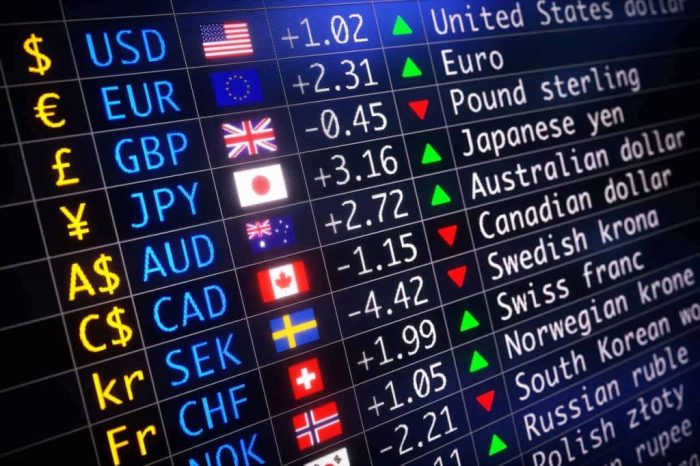Currency Market Insights – , also known as the foreign exchange (forex) market, is the largest and most liquid financial market globally, with daily trading volumes surpassing $5 trillion. Traders and investors flock to this dynamic market to take advantage of fluctuations in currency exchange rates, driven by a variety of economic, political, and technical factors. In this comprehensive guide, we will explore the essential concepts, strategies, and factors that shape currency exchange rates, providing traders with the insights they need to navigate this complex environment successfully.
Whether you’re a seasoned forex trader or just starting your journey, understanding currency market insights can be a game-changer. By mastering key concepts such as economic indicators, technical analysis, and risk management strategies, traders can enhance their decision-making processes and increase their chances of success.
Table of Contents
ToggleUnderstanding the Currency Market: An Overview
The forex market operates 24 hours a day, five days a week, providing a global platform for the trading of currency pairs. Unlike stock markets, which have centralized exchanges, the forex market is decentralized, meaning that trades occur directly between participants, including banks, financial institutions, governments, corporations, and individual traders.
At its core, the forex market revolves around the exchange of one currency for another, with currency pairs such as EUR/USD (Euro/US Dollar) and USD/JPY (US Dollar/Japanese Yen) representing the most commonly traded pairs. The value of these currency pairs fluctuates constantly based on supply and demand dynamics, driven by a multitude of factors that influence both local and global economies.
Key Factors Influencing Currency Exchange Rates
To make informed trading decisions, it’s essential to understand the various factors that impact currency exchange rates. The value of a currency can be influenced by a combination of economic indicators, geopolitical events, central bank policies, and market sentiment. Let’s dive into the most significant factors:
1. Economic Indicators
Economic indicators are vital metrics that reflect the overall health of an economy. Traders closely monitor these indicators as they can provide early signals about potential currency movements. Some of the most critical economic indicators include:
- Gross Domestic Product (GDP): GDP measures the total value of goods and services produced within a country over a specific period. A growing GDP typically signals a strong economy, which can lead to currency appreciation, while a shrinking GDP may indicate economic weakness, leading to currency depreciation.
- Inflation: Inflation refers to the rate at which the general price level of goods and services is rising. Moderate inflation is generally seen as positive, but high inflation can erode a currency’s purchasing power, leading to depreciation. Traders pay close attention to inflation reports, as central banks may raise interest rates to combat high inflation, which can strengthen the currency.
- Interest Rates: Central banks, such as the Federal Reserve (Fed) in the US or the European Central Bank (ECB), set interest rates to control inflation and stabilize the economy. Higher interest rates tend to attract foreign capital, as investors seek higher returns, thereby boosting demand for the currency and increasing its value.
- Unemployment Rates: The unemployment rate measures the percentage of the labor force that is jobless. A low unemployment rate generally indicates a healthy economy and can positively influence a country’s currency. Conversely, high unemployment can signal economic distress and lead to currency depreciation.
2. Political and Geopolitical Events
Political stability and geopolitical events can significantly impact currency markets. Elections, government policies, trade agreements, and geopolitical tensions can all create uncertainty and volatility in the forex market. For instance, unexpected election outcomes or trade wars can lead to rapid currency fluctuations as market participants react to the changing landscape.
3. Market Sentiment and Speculation
Market sentiment refers to the overall attitude of investors toward a particular currency or the market as a whole. Traders’ perceptions of future economic conditions, geopolitical risks, or market trends can drive significant currency movements. Speculation also plays a role, as traders may buy or sell currencies based on their predictions about future market conditions.
Forex Trading Strategies: Turning Insights into Action
To succeed in the currency market, traders need to implement well-defined trading strategies based on market insights. There are numerous strategies traders can use, each with its own set of rules and objectives. Here are a few popular forex trading strategies:
1. Breakout Strategy
One of the most widely used strategies in forex trading is the breakout strategy. This approach involves identifying key support and resistance levels on a currency pair’s price chart. When the price breaks above a resistance level or below a support level, it signals a potential price trend, providing an opportunity for traders to enter the market. The breakout strategy aims to capture significant price movements and is often used during periods of increased volatility.
For example, if the EUR/USD pair breaks through a major resistance level, traders may interpret this as a bullish signal and buy the currency pair, expecting further upward momentum. Conversely, a break below support may trigger a sell order as traders anticipate a downward trend.
2. MACD Forex Strategy
The Moving Average Convergence Divergence (MACD) strategy is a popular technical analysis tool that helps traders identify potential trend reversals. The MACD indicator consists of two moving averages that converge and diverge to signal changes in momentum. When the MACD line crosses above the signal line, it is considered a bullish signal, while a cross below the signal line indicates a bearish signal.
By incorporating the MACD strategy into their trading, traders can identify potential buying and selling opportunities based on momentum shifts. This strategy is particularly useful for traders who prefer to follow market trends and capitalize on potential trend reversals.
3. Bollinger Bands Strategy
Another popular technical analysis tool used in forex trading is the Bollinger Bands strategy. Bollinger Bands consist of three lines: the middle band (a simple moving average) and two outer bands that represent standard deviations from the middle band. These bands expand and contract based on market volatility.
When the price of a currency pair moves outside the upper or lower bands, it can signal overbought or oversold conditions, potentially indicating a reversal in price direction. Traders use Bollinger Bands to identify potential entry and exit points, especially during periods of high volatility.
The Importance of Risk Management in Forex Trading
While currency market insights and trading strategies are essential for success, risk management plays an equally critical role in protecting traders from significant losses. The forex market’s high volatility can result in rapid price swings, making it essential to have robust risk management techniques in place.
1. Stop-Loss Orders
A stop-loss order is a risk management tool that automatically closes a trade when the price reaches a predetermined level. By setting a stop-loss, traders can limit their potential losses and protect their capital. For example, if a trader buys the EUR/USD pair at 1.2000, they might set a stop-loss at 1.1950 to exit the trade if the price moves against them.
2. Position Sizing
Position sizing involves determining the appropriate amount of capital to allocate to each trade based on the trader’s risk tolerance and overall account balance. By managing the size of their positions, traders can limit their exposure to risk and avoid over-leveraging their accounts.
3. Diversification
Diversifying a forex portfolio by trading multiple currency pairs or using different strategies can help mitigate risk. By spreading risk across various trades, traders can reduce the impact of losses on any single trade.
Emerging Trends in the Currency Market
The currency market is constantly evolving, with new trends and developments shaping its future. Some of the key emerging trends include:
- Cryptocurrency Integration: The rise of cryptocurrencies like Bitcoin and Ethereum has created new opportunities and challenges for forex traders. Some brokers now offer cryptocurrency pairs, allowing traders to diversify their portfolios with digital assets.
- Algorithmic Trading: Algorithmic trading, which uses computer programs to execute trades based on pre-set criteria, is becoming increasingly popular in the forex market. Algorithmic systems can analyze large amounts of data and execute trades at high speeds, helping traders take advantage of short-term market inefficiencies.
- Decentralized Finance (DeFi): DeFi platforms are introducing new ways for traders to access financial services and trade currencies in a decentralized manner. These platforms offer innovative solutions, such as decentralized exchanges and lending protocols, that can impact the traditional forex market.
Conclusion: Mastering Currency Market Insights
Currency market insights are indispensable for traders seeking to navigate the dynamic and ever-changing world of forex trading. By understanding the key factors that influence currency exchange rates, incorporating effective trading strategies, and implementing robust risk management techniques, traders can enhance their chances of success.
Whether you prefer to use technical analysis tools like MACD and Bollinger Bands or follow fundamental economic indicators, staying informed and adaptable is crucial in the fast-paced forex market. As the market continues to evolve, staying ahead of emerging trends and leveraging reliable data sources will empower traders to make informed decisions and thrive in this competitive arena.
Frequently Asked Questions (FAQs)
1. What are the most important economic indicators for currency trading? Key economic indicators include GDP, inflation, interest rates, and unemployment data, as these metrics provide insights into a country’s economic health and can influence currency exchange rates.
2. How can technical analysis help in forex trading? Technical analysis involves studying historical price data and using indicators like moving averages and Bollinger Bands to identify patterns and trends. These insights can help traders predict future price movements and make informed decisions.
3. What is the role of risk management in forex trading? Risk management is crucial for protecting traders from significant losses. Tools like stop-loss orders and position sizing help limit risk and preserve capital in the volatile forex market.




